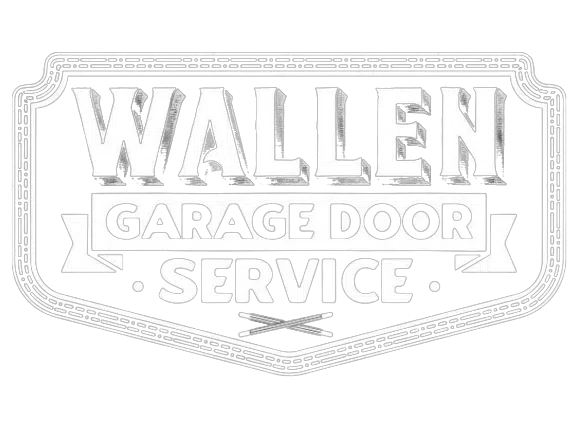If you’ve ever wondered, “how do garage door openers work?” you’re not alone. Garage door openers are a marvel of modern convenience, employing a motorized mechanism to lift and lower heavy doors with the push of a button. However, there are times when you might need to operate your garage door manually. This often happens during power outages or when performing routine maintenance, requiring the use of the emergency release cord. Understanding how your garage door opener functions and how to re-engage it after manual operation is essential for every homeowner.
Imagine coming home after a long day, only to find your garage door won’t open because you used the emergency release cord earlier. Knowing how to quickly and effectively re-engage your garage door can save you time and frustration. This guide will walk you through the steps to ensure your garage door is functioning smoothly again.
In the following sections, we’ll explore the basic mechanics of garage door openers, identify the crucial components involved, and provide a detailed, step-by-step process to re-engage your garage door. Whether you’re dealing with an unexpected power outage, or you’ve disengaged the door for maintenance, this guide has you covered.
So, if you’re ready to master the ins and outs of your garage door opener and ensure your door operates seamlessly, read on. By the end of this guide, you’ll have the confidence and knowledge to handle your garage door with ease.
Understanding How Garage Door Openers Work
Garage door openers are ingenious devices designed to make life easier and more convenient. At their core, these systems consist of a motor, a track, and a trolley. Here’s a breakdown of how they work:

The Motor
The motor is the heart of the system, powering the opener and driving the trolley along the track. Modern garage door openers come with various types of motors, including chain drive, belt drive, and screw drive. Each type has its own advantages, but they all serve the same basic function: moving the trolley. Chain drives are robust and reliable, though they can be noisy. Belt drives are quieter and smoother but can be more expensive. Screw drives strike a balance between the two, offering decent speed and noise levels.
The Track
The track is the path along which the trolley travels. It’s typically a metal rail that extends from the motor to the wall where the garage door is mounted. The trolley moves along this track, carrying the door with it. The smooth operation of the track is crucial for the system’s efficiency, and keeping it clean and well-maintained is key to preventing disruptions.
The Trolley
Attached to the garage door itself, the trolley is the component that actually moves the door up and down. When the motor activates, it pulls or pushes the trolley along the track, thus opening or closing the door. The trolley is connected to the garage door by a sturdy arm, ensuring that the door follows the trolley’s movement precisely.
Now, what happens if you need to operate your garage door manually? This is where the emergency release cord comes into play.
The Role of the Emergency Release Cord
The emergency release cord is a critical safety feature. Typically red and hanging from the trolley, this cord allows you to disconnect the door from the opener. By pulling the cord, you can switch the door to manual mode, which is particularly useful during power outages or if the opener malfunctions. It’s a simple yet effective way to ensure you can always access your garage, regardless of technical issues. The cord is designed to be easily accessible and operable, ensuring you can disengage the door quickly if needed.
Common Scenarios When You Need to Re-Engage the Door
There are several situations where you might need to re-engage your garage door opener:
- Power Outages: If a power outage occurs, you might need to pull the emergency release cord to manually operate the door. Once the power is restored, you’ll need to re-engage the opener to return to normal operation.
- Routine Maintenance: Sometimes, during maintenance tasks such as lubricating the tracks or replacing parts, you may need to disengage the opener to move the door manually. After completing the maintenance, re-engaging the opener ensures that the door functions smoothly with the automated system.
- Opener Malfunctions: If your garage door opener malfunctions, such as the motor failing or a mechanical issue arising, using the emergency release cord allows you to manually operate the door until the problem is resolved. Once the malfunction is fixed, re-engaging the opener restores automated control.
Understanding these fundamental aspects of your garage door opener and the role of the emergency release cord can help you manage your garage door more effectively. Whether you’re dealing with a power outage, performing maintenance, or troubleshooting a malfunction, knowing how to re-engage the door is a valuable skill that ensures convenience and safety.
Re-Engaging the Garage Door Opener
Re-engaging your garage door opener is a straightforward process, but it requires attention to detail to ensure it’s done correctly and safely. Follow these steps to get your garage door back in working order.

Step 1: Make sure the Garage Door is in the Down Position
Ensure that the garage door is completely closed before beginning. Two reasons make this important: alignment and safety. When attempting to re-engage the opener, if the door is fully lifted or half open, it may fall, possibly inflicting harm or damage.
Step 2: Pull the Emergency Release Cord
Locate the emergency release cord. It’s typically a red cord hanging from the trolley, which is the part that connects the door to the opener track. Pull this cord down and towards the door to disengage the trolley from the opener. You might hear a clicking sound indicating the trolley has been released. This step is essential because it switches the door to manual mode, allowing you to move it without resistance from the opener.
Step 3: Manually Move the Garage Door
Once the door is in manual mode, you can move it freely. Lift or lower the door manually until the trolley re-engages with the opener carriage. If the door was fully down when you pulled the release cord, you might need to lift it slightly to get the trolley to catch onto the carriage. You should feel or hear a click when they lock together. This re-engagement is usually straightforward, but if the door feels stuck or hard to move, check for any obstructions in the track or issues with the door’s alignment.
Step 4: Test the Opener
After the trolley has re-engaged with the carriage, it’s time to test the garage door opener. Use the remote or the wall-mounted switch to activate the opener. Observe the door as it moves up and down to ensure it’s operating smoothly. If the door moves correctly, the re-engagement process is complete. If the door doesn’t move or makes unusual noises, there might be an issue with the alignment or the connection between the trolley and the carriage.
Troubleshooting Tips:
- Check the Alignment: If the door doesn’t engage properly, the tracks or the door itself might be misaligned. Ensure that the tracks are straight and free of debris.
- Inspect the Sensors: Modern garage door openers have safety sensors near the bottom of the door tracks. Make sure these sensors are aligned and free from obstructions, as misaligned sensors can prevent the door from operating.
- Lubricate Moving Parts: Sometimes, the door or trolley might need lubrication to move smoothly. Apply a garage door lubricant to the tracks, rollers, and hinges.
Re-engaging your garage door opener is an essential skill that ensures your door functions correctly and safely. Regularly checking and maintaining your garage door system can prevent many common issues, ensuring that you don’t find yourself stuck with a non-operational door. If you encounter persistent problems or if the door doesn’t re-engage as it should, it might be time to consult a professional for a thorough inspection and repair.
Troubleshooting Common Issues
Even with careful attention, there may be times when your garage door doesn’t re-engage properly. Here’s a comprehensive guide to troubleshooting and resolving common issues that might prevent your garage door from functioning correctly.

What to Do If the Door Doesn’t Re-Engage
If your garage door doesn’t re-engage with the opener after following the re-engagement steps, don’t panic. There are several things you can check to identify and fix the problem:
- Ensure the Door is Properly Closed:
- Sometimes, the door might not be fully down when you try to re-engage it. Ensure the door is completely closed before attempting to re-engage the opener.
- Check the Position of the Trolley and Carriage:
- Verify that the trolley is aligned with the carriage on the track. If the trolley is too far forward or backward, it won’t connect properly with the carriage. You may need to manually adjust its position to ensure a proper connection.
- Verify the Emergency Release Cord:
- Make sure the emergency release cord has been fully reset. If the cord is still pulled down or in an engaged position, the trolley won’t lock into the carriage.
Checking the Alignment of the Sensors
Modern garage doors are equipped with safety sensors located near the bottom of the tracks on either side. These sensors ensure that the door doesn’t close if there’s an obstruction. Misaligned sensors can prevent the door from operating correctly. Here’s how to check and align them:
- Locate the Sensors:
- The sensors are small devices placed about six inches above the ground on each side of the door. They should face each other directly.
- Check for Obstructions:
- Ensure there’s nothing blocking the sensors. Even small objects like leaves or dirt can interfere with their operation.
- Align the Sensors:
- If the sensors are misaligned, you’ll typically see a blinking light on one or both of the units. Adjust the sensors so that they’re facing each other perfectly. The indicator lights should be steady when they’re aligned correctly.
- Clean the Lenses:
- Dirt or spider webs on the sensor lenses can also cause issues. Gently clean the lenses with a soft cloth.
Inspecting the Tracks and Rollers for Obstructions
The tracks and rollers play a crucial role in the smooth operation of your garage door. Over time, they can accumulate debris or suffer from wear and tear, which can prevent the door from re-engaging properly. Here’s what to do:
- Visually Inspect the Tracks:
- Look along the entire length of the tracks for any obstructions or debris. Remove any objects that could be blocking the path of the rollers.
- Check for Track Alignment:
- Ensure the tracks are properly aligned and parallel. Misaligned tracks can cause the door to bind and not move smoothly. You can adjust minor misalignments by loosening the bolts holding the tracks and gently tapping them back into position.
- Examine the Rollers:
- Inspect the rollers for signs of wear or damage. Rollers should move smoothly along the tracks. If they’re worn out or damaged, they may need to be replaced.
- Lubricate Moving Parts:
- Apply a silicone-based lubricant to the tracks and rollers to ensure smooth movement. Avoid using grease or heavy oils, as these can attract dust and debris.
By following these troubleshooting steps, you can often resolve common issues that prevent your garage door from re-engaging properly. Regular maintenance and inspections can help prevent these problems from occurring in the first place, ensuring your garage door operates smoothly and reliably. If you continue to experience issues despite your best efforts, it might be time to call in a professional to diagnose and fix the problem. This ensures that your garage door system remains in optimal condition and provides safe, reliable access to your home.
Preventative Maintenance Tips
Preventative maintenance is key to ensuring your garage door operates smoothly and reliably, reducing the chances of disengagement issues. By regularly maintaining the various components of your garage door system, you can extend its lifespan and prevent inconvenient malfunctions. Here are some essential maintenance tips to keep your garage door in top condition.
Regular Maintenance to Avoid Disengagement Issues
A well-maintained garage door system is less likely to experience disengagement issues. Here are some general maintenance tasks you should perform regularly:
- Inspect the Door and Opener:
- Conduct a visual inspection of your garage door and opener at least once a month. Look for signs of wear and tear, such as frayed cables, loose hardware, or rusted components.
- Check the Balance:
- An uneven garage door might generate extra stress on the opener. To verify the balance, unplug the opener using the emergency release cable and physically lift the door halfway. If it stays in place, it’s balanced. If it moves up or down, the springs might need modification.
- Tighten Hardware:
- The vibration from regular use can loosen the door’s hardware. Inspect and tighten all roller brackets and bolts that hold the rails in place.
- Replace Weatherstripping:
- Check the weatherstripping along the bottom of the door for signs of wear and tear. Replace it if it’s cracked or broken to ensure a good seal and prevent drafts and debris from entering your garage.
Lubrication and Cleaning of Tracks and Rollers
Keeping the tracks and rollers clean and well-lubricated is essential for the smooth operation of your garage door. Here’s how to do it:
- Clean the Tracks:
- Dirt and debris might develop in the rails, causing the door to operate harshly. Use a moist cloth to clean down the inside of the tracks, eliminating any dirt and dust. Avoid using aggressive chemicals that might damage the metal.
- Inspect and Clean the Rollers:
- Check the rollers for any indications of wear or damage. Clean them with a moist cloth to remove any filth. If the rollers are worn out or damaged, replace them to maintain smooth performance.
- Lubricate Moving Parts:
- Use a high-quality silicone-based lubricant to the tracks, rollers, hinges, and springs. This decreases friction and wear, helping the door glide smoothly. Stay away from using grease, which can attract dirt and grime.
Testing the Emergency Release Mechanism Periodically
The emergency release mechanism is a crucial safety feature of your garage door system. Testing it periodically ensures that it will work correctly in an emergency:
- Test the Release Cord:
- Pull the emergency release cord to disengage the door from the opener. Make sure the door can be operated manually. This tests both the cord and your ability to manually open and close the door.
- Re-Engage the Opener:
- After testing, re-engage the opener by moving the door until the trolley reconnects with the carriage. Ensure the door operates smoothly with the opener.
- Check the Cord’s Condition:
- Inspect the emergency release cord for any signs of wear or damage. Replace it if necessary to ensure it’s always ready for use.
By incorporating these preventative maintenance tips into your routine, you can significantly reduce the likelihood of encountering disengagement issues with your garage door. Regular maintenance not only ensures smooth operation but also enhances the longevity of your garage door system. If you find any issues that you’re not comfortable fixing yourself, don’t hesitate to contact a professional garage door technician. This proactive approach will keep your garage door reliable, safe, and in excellent working condition for years to come.
Frequently Asked Question
What is the first step to re-engage a garage door opener?
The first step to re-engage a garage door opener is to ensure the garage door is in the down position. This ensures that the door is properly aligned and safe to work with. Once the door is fully closed, you can proceed to pull the emergency release cord to disengage the trolley from the opener.
Why might a garage door become disengaged?
There are several common reasons why a garage door might become disengaged:
- Power Outages: During a power outage, you may need to pull the emergency release cord to manually operate the door.
- Accidental Pulling of the Release Cord: Sometimes, the cord can be pulled accidentally, especially if it’s within reach or if there’s a lot of activity in the garage.
- Maintenance Activities: When performing maintenance tasks, such as lubricating the tracks or inspecting components, the door may be manually disengaged for easier handling.
How do I know if my garage door opener is re-engaged?
After you manually move the garage door and attempt to re-engage the opener, you should hear a click or see the trolley lock back into place with the carriage. To verify that the opener is re-engaged, use the remote or wall-mounted control to operate the door. The door should move up and down smoothly with the opener’s motor without any manual assistance. If it operates normally, the opener is properly re-engaged.
What should I do if the garage door does not re-engage?
If the garage door does not re-engage, follow these troubleshooting steps:
- Check the Alignment of Sensors: Check the safety sensors near the bottom of the garage door tracks are aligned. Misaligned sensors can prevent the door from operating appropriately.
- Inspect for Obstructions in the Tracks: Look for any debris or objects blocking the tracks that could be hindering the trolley’s movement.
- Ensure the Emergency Release Cord is Properly Reset: Make sure the cord is not still engaged and has returned to its normal position. Sometimes, simply pulling the cord again and manually moving the door can help reset the mechanism.
How often should I conduct maintenance on my garage door opener?
Regular maintenance should be performed every six months to ensure the smooth operation and longevity of your garage door opener. This includes lubricating the tracks and rollers, cleaning the components, tightening any loose hardware, and testing the emergency release mechanism. Regular inspections can help identify potential issues early and prevent costly repairs down the line.
Conclusion
Re-engaging your garage door opener may seem daunting at first, but by following a few key steps, you can ensure your garage door operates smoothly and reliably. Let’s recap the essential steps and why regular maintenance is crucial.
- Ensure the Garage Door is in the Down Position: This step is crucial for safety and proper alignment. Always start with the door fully closed before attempting any adjustments.
- Pull the Emergency Release Cord: Locate the red emergency release cord and pull it to disengage the trolley from the opener. This enables you to open the door manually.
- Manually Move the Garage Door: Lift or lower the door manually until the trolley re-engages with the opener carriage. You should hear a click or feel the trolley lock into place.
- Test the Opener: Use the remote or wall-mounted control to operate the door. If the door moves smoothly with the opener, it is properly re-engaged. If not, troubleshoot common issues like sensor alignment and track obstructions.
Regular maintenance is the cornerstone of a well-functioning garage door system. By routinely inspecting, cleaning, and lubricating the components, you can prevent many common issues that lead to disengagement and malfunction. Regular checks help ensure that:
- The tracks and rollers are free of debris and well-lubricated.
- The sensors are correctly aligned and unobstructed.
- The emergency release mechanism works properly when needed.
Maintaining your garage door not only enhances its performance but also extends its lifespan, saving you from costly repairs and replacements.
Taking care of your garage door can sometimes require more than a DIY approach. If you encounter persistent issues or are unsure about performing maintenance tasks yourself, it’s always best to consult a professional. They can provide expert insights, perform detailed inspections, and ensure your garage door system remains in optimal condition.
For more tips, detailed guides, and professional services, explore our resources or contact a trusted garage door technician. Your garage door is a vital part of your home’s security and convenience—keeping it in top shape ensures peace of mind and reliable access.
By following these guidelines and seeking professional help when necessary, you can keep your garage door functioning smoothly and avoid the frustrations of unexpected malfunctions. Stay proactive with your maintenance, and your garage door will serve you well for years to come.






